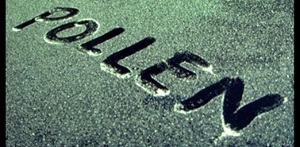Ah…Spring. Birds are chirping, bees are buzzing, and flowers are starting to bloom- Love is in the air. But as I start looking around all the splendor nature has provided, I am reminded that love isn’t the only thing in the air during Spring. Pollen has turned my black sedan into a yellow submarine, and unless you’re a fan of the Beatles or hoping it will help my car “bloom” you’re already thinking like me- Get it off!
It seems as though as soon as you finish washing a car in the Spring, the pollen that you couldn’t see floating by as you washed and dried has started to lay itself down on your smooth, silky, shiny paint. But believe or not, that really isn’t a problem. Sure, pollen gives black cars a nuclear green glow, and white cars look like yellow, but the pollen just laying there isn’t all that bad. The problem comes after you decide how to best remove it. There are a few ways you could do it, but only one guaranteed to not ruin your paint.
Pollen is something you want to remove as often as you can. While there are many forms of pollen, two popular forms around this time of year are flower (like Morning Glorys) pollen and tree (like pine) pollen. Although it is mighty small, a single pollen grain can cling to the various pores of your paint. Once there, it’s the acidity of the grain that can cause damage. The acidity is often activated in pine pollen (for example) when it rains can cause staining and premature oxidation over time.
So how does it cling and how do I avoid damage when removing it? Both of those answers could be answered by taking a microscopic look at pollen.
Yes, that Flail looking thing is pollen. It uses the prongs to hold on tight to bees, mites, and your car’s paint in hopes of doing its job. Those same prongs are the reasons you should avoid two popular pollen removal techniques: The Wipe and The Rinse.
Using the wipe seems “okay” at first, but even one swipe on dry paint with no lubricant could start the viral streaks and light scratches that ruin your perfect paint. Think it’s too light to do damage? Maybe, but that Flail look-a-like is just one at a microscopic level. Multiply that one times a lot, add some pressure, and dry paint…now that is a disaster waiting to happen.
Another popular technique is simply “hosing” the car at the house or spraying it off at the carwash. While you do in fact remove much of the pollen this way and don’t threaten the paint in any way, you do miss the pollen closest to the perfection. Even with hot water and a pressure washer, the pollen is still there, hanging tight. Not only is it not gone, but you have now activated some of its acidic qualities.
So what to do? Do it right and take your time. A good old wash: soapy water, gentle agitation, and dry. The soap will encapsulate the pollen and loosen its grip on the paint. Light agitation will move it out of the pores and leave you with a glossy, scratch free finish. While you may not be able to wash your car every night, when you do take the time you’ll end up with one that allows you to enjoy the love that’s in the air and not hate the scratches in your paint.
